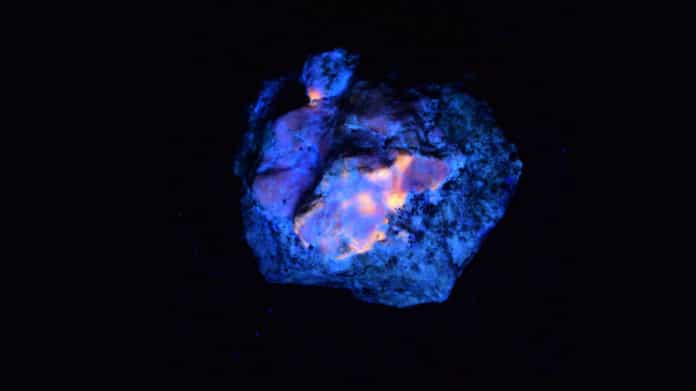“Glow-in-the-dark” materials are known to practically everyone who has ever traveled by airplane or cruise ship since they are commonly used for self-lit emergency exit signs. The green afterglow, persistent luminescence (PeL), is obtained from divalent europium doped to a synthetic strontium aluminate, but some natural minerals can be capable of afterglow.
The materials used at the moment are all synthetic. But, there are also some natural minerals capable of afterglow.
One such mineral is hackmanite, which can be found in Afghanistan, Greenland, Canada, and Pakistan. However, all hackmanites are not capable of glowing in the dark.
Scientists at the University of Turku have discovered the origin of the natural mineral’s glow that generates white luminescence in the dark.
Postdoctoral Researcher Isabella Norrbo from the research group said, “We have conducted a lot of research with synthetic hackmanites and have been able to develop a material with an afterglow distinctly longer than that of natural hackmanite. However, the conditions affecting the luminescence have been unclear so far.”
Doctoral Candidate Sami Vuori from the research group said, “Nature has extensive experience in optimizing minerals, which is why we used natural hackmanites to study the afterglow effect.”
The study was carried out as an international collaboration between scientists from different fields.
University Lecturer Mika Lastusaari, the head of photonics research at the Inorganic Materials Chemistry research group at the University of Turku, said, “Through this extensive collaboration, we were able to conclude that the most central elements behind the glow of natural hackmanite are sulfur, potassium, titanium and iron, and the correct balance of their concentrations.”
For this study, scientists combined experimental and computational data. They found that titanium glows at the core of hackmanite, and the afterglow is related to the transfer of electrons in the conduction band.
Lastusaari explained, “With these results, we obtained valuable information on the conditions affecting the afterglow of hackmanites. Even though nature has not, in this case, been able to form a material with a glow as effective as in synthetic materials, nature has helped significantly in the development of increasingly more effective glowing materials.”
Other co-authors of the study include a research group of Assistant Professor Tangui Le Bahers from the University of Lyon, Professor Philippe Smet from Ghent University, Doctor Ludo van Goethem and others from the Mineralogical Society of Antwerp, and researchers from the University of São Paulo. Finnish partners came from different departments at the University of Turku and Åbo Akademi University and the University of Jyväskylä.
Journal Reference:
- Cecilia Agamah et al. Hackmanite—The Natural Glow-in-the-Dark Material. DOI: 10.1021/acs.chemmater.0c02554
